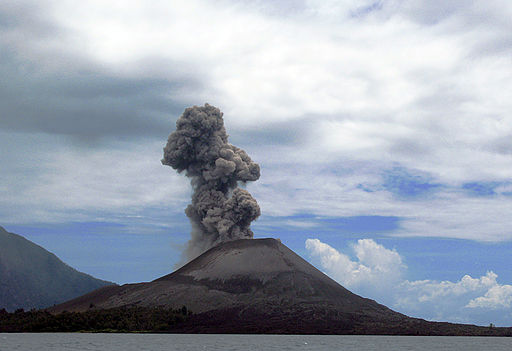
VOLCANIC ERUPTION
JANUARY 30, 2022
Tale Of The Mighty Krakatoa Volcano
Tale of the mighty Krakatoa volcano describes the extraordinary eruption from the volcano as one of the biggest disasters in the world.
Indonesia which is included in the category of countries on the Ring of Fire has hundreds of active volcanoes that can erupt at any time, one of which is Mount Krakatoa or Krakatau as the locals call it.
Krakatoa is a volcanic archipelago that is still active and located in Punduh Pedada District, South Lampung Regency, precisely in the waters of the Sunda Strait, between the islands of Java and Sumatra.
It was formed due to the movement of the Eurasian Plate and the Indo-Australian Plate which move against each other. This collision causes the magma to heat up and produce a very active volcano.
Experts estimate that in ancient times there was a very large mountain in the Sunda Strait which finally erupted violently leaving a caldera (large crater) called Mount Krakatau Purba, which is the mother of Mount Krakatoa that erupted in 1883.
Rakata Island, which is one of the three remaining islands of Mount Krakatau Purba then grew according to volcanic impulses from the bowels of the earth known as Mount Krakatoa (or Mount Rakata) which made of basaltic rock. Later, two volcanoes emerged from the middle of the crater, named Mount Danan and Mount Perbuwatan which then merged with Mount Rakata which appeared first. The unity of these three volcanoes is called Mount Krakatoa.
The eruption of Mount Krakatoa in 1883 became one of the most powerful and dangerous volcanic eruptions in the history of disasters in the world. When it erupted on 26 and 27 August 1883, Krakatoa ejected millions of tons of rock, dust and magma, the material covering an area of 827,000 km.
The initial eruption of Mount Krakatoa occurred on Sunday, August 26, 1883 at 12:53. This eruption was already devastating from the start. The volcano spewed material into the atmosphere, hot clouds and debris soar into the air 24 km above Perbuwatan, the northernmost island in the Krakatau Archipelago, Lampung.
The eruption of Krakatoa belongs to the Plinian eruption type, the type of eruption that can create an eruption column as high as 45 kilometers into the stratosphere. Mount Krakatoa’s volcanic ash even spread throughout the world and triggered a very powerful tsunami.
The tsunami wave in the Sunda Strait area at that time reached a distance of 5 km inland in the Pandeglang area and 800 meters in Cianyer. It was recorded that the victims who died in the eruption on August 24, 1883 reached 36.417 people
The sound of the eruption was heard as far as Alice Springs, Australia and Rodrigues Island near Africa, 4,653 kilometers away from the location. Its explosive power is estimated at 30,000 times more powerful than the atomic bombs that were detonated on Hiroshima and Nagasaki at the end of World War II.
The global catastrophic impacts of Krakatoa when it erupted including darkness for more than 3 days in Indonesia due to volcanic ash that covered the atmosphere. The sun shone dimly until a year after the eruption. Scattered dust from volcanic eruptions was visible in the sky from Norway to New York.
Not to mention the hot ash rain that killed thousands of people. The extraordinary tsunami left the victims floating in the ocean for months and the small islands around Mount Krakatoa have almost all disappeared.
In 2019, the area of eruption which is now a nature reserve has four small islands: Rakata Island, Anak Krakatau Island, Sertung Island, and Panjang Island (Rakata Kecil). Based on geological studies, all of these islands originate from a single volcanic system of Krakatoa that existed in the past.
Currently, the height of Anak Krakatau is about 230 meters above sea level, while Mount Krakatoa was previously 813 meters above sea level.
related post